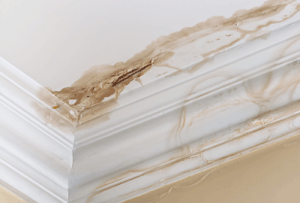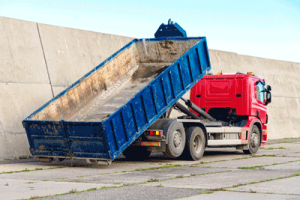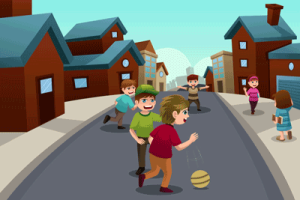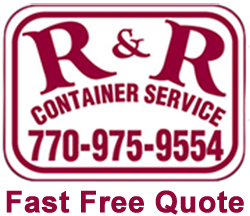Container Services
How the US Air Force is turning dumpster refuse into power.
 In Hawaii, the US Air Force is using 6.8 million dollars to test their ability to demonstrate the possibility of using the gas (called syngas) emitted from trash such as wood, plastics and other biomass into power.
In Hawaii, the US Air Force is using 6.8 million dollars to test their ability to demonstrate the possibility of using the gas (called syngas) emitted from trash such as wood, plastics and other biomass into power.
This is not new as the first US waste treatment plant using incineration to attempt to change waste to energy was built at Ryker’s Island NY in 1885!
The military has a special interest in creating power from waste as they are looking at ways to still have power off the grid in case of an attack or failure of the power system. Maybe we should look at how to create power from our own waste!
The goal of this Air Force project is to turn 10 tons of trash a day to enough power to provide for about 100 homes, or about 300 KW.
In case you were wondering, 100 tons is equal to about 17 of our largest dumpster!
The project is based on a process called gasification. This technology feeds waste into a large vessel where it is treated with a plasma technology causing a very high temperature producing syngas (synthetic gas). The syngas is treated, cleaned and then used as fuel in gas turbines to generate electricity.
A successful project will help move the Defense Department towards its goal of using renewable resources for at least 25 percent of its energy by 2025.
In the mainstream waste management world the focus is ‘Reduce, Reuse, Recycle’, followed by composting and digestion.
This line of thinking leaves a significant proportion of residual waste in need of disposal. There is plenty of room for landfills in rural areas in the US so this process can continue for a long time. But time seems to go by fast!
Waste sent to landfill is often too contaminated to be recycled or biologically treated. Instead, if it is to be diverted from landfill, it must be treated with high heat.
This uses to mean incineration or burning, which requires the emissions to be scrubbed and also produces toxic ash.
Gasification produces syngas that can be upgraded into a variety of products including liquid fuels, chemicals, methane or electrical power. This means the process is adaptable to local conditions and needs.
Some types of gasification also operate at much higher temperatures than tradition incineration. At 4000°F (2200°C) organic hazards are completely destroyed and minerals are melted, allowing all the material to be safely converted into useful products.
Of course this requires investment to build and manage, so we hope that this new Air Force project continues to show improvement in this process.
The good news for us is that dumpsters are still needed – so call us today at 770-975-9554!
Container Services
Now that the weather has turned from dreary, gray to warm, spring days, it is time to assess roof and siding damage from winter storms.
 Especially, if there has been water leaks and the chance for mold to emerge.
Especially, if there has been water leaks and the chance for mold to emerge.
Strong winds, horizontal rain, and freezing temperatures can compound to compromise siding, roofing tiles, door and window seals.
Storm damage often goes undetected and unrepaired until warm weather arrives. By then, water from snow, rain or melting ice may have already seeped into basements, attics, and foundations. And while water damage itself can cause a mess, one of the biggest dangers is mold.
According to the World Health Organization there are 7 million death linked annual to mold and indoor air pollution.
Inside your house, those spaces can include a damp laundry area, an un-vented bathroom or a closet where wet clothing or boots have been consistently tossed.
One of the worst places mold can grow is inside your walls and beneath flooring that has become wet from water leaks.
That is why it is so critical to check for and repair even minor storm damage on the outside of your home before it finds its way into the inside. Below is a check list to help you find anything amiss!
The Roof
• Check for missing or loose shingles.
• Inspect the metal flashing around chimneys or skylights.
• Tour the attic and crawl spaces to verify that no water has leaked in.
• Clean out gutters and downspouts so that they don’t have a chance to back up.
• Make sure all downspouts are far away from your home’s foundation.
Siding, windows and doors
• Look for any loose or damaged siding and repair it.
• Make sure the seals around doors and windows it tight and now sagging. Replace caulking if it has become dried or missing in places.
• Use a bleach solution in window and door tracks to prevent mold growth.
Basements
• If you have a basement, inspect for water damage from cracks or the seam where the wall and floor come together.
• Make sure there is no standing water.
• Invest in a dehumidifier to remove moisture from high humidity areas like basements and mud rooms.
If you find water leaks or damage, try and locate the area where water is entering your home. See if you can determine the reason for the leak. Once you have made repairs, it’s imperative you disinfect, dry or remove any damp or wet building materials within 24 to 36 hours to stop mold.
If it comes down to major repairs call R & R Container Services to help you haul away damaged shingles, siding and dry wall at 770-975-9554.
.
Container Services
Spring is here, which means more kids are outside playing and we want to encourage safety around roll-off container collection trucks.
 Children are naturally fascinated with trucks, and how they work, but it is important to keep a safe distance and use common sense around these large vehicles.
Children are naturally fascinated with trucks, and how they work, but it is important to keep a safe distance and use common sense around these large vehicles.
Our top priority is ensuring the safety of people, their kids and animals in our residential as well as our business districts. Here are some spring safety tips to encourage safe habits around collection vehicles.
Know the schedule of when a service vehicle might be in the area. Waste and postal vehicles, trash trucks, and other package delivery services keep regular schedules within their area.
Always, keep a safe distance from the truck – at least 20 feet. Do not climb on the truck. Never stand or play in or around waste and recycling cans or roll-off containers. You might get dumped with the trash!
It takes large, heavy, trucks at least twice as long to stop as a car, so never cut in front of or stop suddenly in front of one. Always keep a safe distance from a collection trucks.
Children should not be allowed to help load any materials into the containers or trucks. In addition to sharp edges, debris can come out of the containers when being lifted by the collection truck.
Collection trucks stop and often back-up as they maneuver into place so don’t follow too closely while walking, running, playing or biking around a roll-off container. Stay alert and listen for the beep-beep-beeping of the back-up alarm.
There are several areas where the visibility is restricted for a driver. Remember if you can’t see the driver, the driver most likely can’t see you!
All collection trucks are equipped with a back-up alarm. Whether you are walking or driving near one of our trucks, if you hear this sound or see the white back-up lights, be sure to get out of the way.
Since 1999, R & R Container Service has provided our residential, commercial, and industrial customers with superior, professional, and friendly roll off containers and waste management services.
Container Services
Spring, planting and yard clean-up the R & R Container Style
 Thankfully, Georgia isn’t known for its hard winters. About every 3 to 5 years a winter storm will grace us with a dusting, or if the kids are lucky, several inches of white powder, though it never lasts long enough for parents to wish they lived further south. But that doesn’t mean this winter’s wild storms didn’t leave our yards in need of a major spring-cleaning.
Thankfully, Georgia isn’t known for its hard winters. About every 3 to 5 years a winter storm will grace us with a dusting, or if the kids are lucky, several inches of white powder, though it never lasts long enough for parents to wish they lived further south. But that doesn’t mean this winter’s wild storms didn’t leave our yards in need of a major spring-cleaning.
Here’s a step by step on how to clean up your yard and get ready for summer:
Step 1 – Clean-up the debris. If the North winds and rain have done a number on your trees and shrubs, begin by collecting fallen branches, broken limbs and scattered sticks. If you need mulch, you can rent a wood-chipper from a hardware store or garden center. Otherwise, depending on the amount of debris you need to dispose of, you can rent a roll-off container in small, medium or large sizes.
Step 2- Rake any leaves into piles for easy pick up. Last year’s leaves make great compost for gardens and flower beds. If mold allergies effect you don’t work the leaves if they are wet. If you don’t have a garden toss them into your roll-off container. Just don’t let them keep the new grass from absorbing sunlight.
Step 3 –Get out your pruning shears. Trim back weatherworn bushes and hedges as well as any perennials that are overgrown. Cut back loose tree branches and limbs that you can reach. Don’t hesitate to call a professional tree-trimmer to take care of bigger trees or branches that are out of your reach.
Step 4 – Visit your local garden center to start planning your garden and landscaping for the summer. Take a drawing of your yard and consult a professional on the sort of trees, shrubs, or plants you’d like to add.
Step 5 – Start your planting. Check the planting dates on your new greenery. Any trees, plants or shrubbery hearty enough to survive spring’s still chilly nights can be put in the ground now.
Contact R & R Container Service today at 770-975-9554, or browse the website for more information about container services or hauling services.
Container Services
Superstition or not? Don’t take out the Trash after Dark even if you have a roll-off container.
 The Russians never take garbage out at night. They believe that if you do, it will bring ruin on the household and there will be no profit coming for days. I guess they have never heard the saying, “if you don’t take out the trash at night – it will stink in the morning”.
The Russians never take garbage out at night. They believe that if you do, it will bring ruin on the household and there will be no profit coming for days. I guess they have never heard the saying, “if you don’t take out the trash at night – it will stink in the morning”.
It is Great Britain tradition that goes like this – on the 1st day of March, before you speak any other words, chant, “rabbits, rabbits, rabbits” and you will have a blessed and lucky year to follow. It was my best friend in high school who first told me about this custom. For almost 30 years I have been faithful, making sure the first words uttered in our house on March 1st is a loud chorus of rabbits, rabbits, rabbits. To not say it was supposed to bring bad luck for an entire year!
Here is another one for your list of don’ts if you are a superstitious person. Never sweep on New Year’s Day. You will sweep all the good luck out of your house. If you like to have New Year Eve’s parties you might want to skip the clean up the next day or forgo having the party all together.
The Chinese believe that good luck can be found in pairs. Whenever the Chinese give a gift, it’s always done in twos. If they wish to give a gift, they will buy two. The more gifts, the more luck, such as giving four, eight, sixteen gifts, and so on. Gifts are given for all sorts of occasions like birthdays, weddings, anniversaries, and New Year.
Whether you are superstitious or not if you think something will help you, it may do just that. Everyone knows there is a tremendous amount of power in belief. If you want to be extra lucky chant rabbits, rabbits, rabbits on the 1st of March, if you don’t want to be profitable don’t take out your trash at night. Have a roll-off container on hand to toss out the trash during the day light hours. Keep your basements, garages and attics free of clutter but don’t sweep away all your luck on New Year’s Day.
Contact R & R Container Service today at 770-975-9554, or browse the website for more information about container dimensions or our hauling services.
Container Services
Tips from R & R Container Services on how to keep your neighborhood safe.
 Do you remember growing up in a neighborhood were you could run free after school, on the weekends and all day during summer vacation without anyone worrying? It seems those days of playing with neighborhood friends, exploring the woods that boarders your house or riding your bike for countless miles with only the worry of making sure you were home in time for dinner are now a thing of the past. Today’s parents have had to change the rule book. It is imperative we know where and with whom our children are with at all times. But have you ever stopped to think that your neighborhood could be a safe place to live if you get all your neighbors involved? Start now, following these easy steps, to bring your neighborhood back to the Andy Griffith Days.
Do you remember growing up in a neighborhood were you could run free after school, on the weekends and all day during summer vacation without anyone worrying? It seems those days of playing with neighborhood friends, exploring the woods that boarders your house or riding your bike for countless miles with only the worry of making sure you were home in time for dinner are now a thing of the past. Today’s parents have had to change the rule book. It is imperative we know where and with whom our children are with at all times. But have you ever stopped to think that your neighborhood could be a safe place to live if you get all your neighbors involved? Start now, following these easy steps, to bring your neighborhood back to the Andy Griffith Days.
Form a neighborhood watch program
Enlist a group of neighbors who are interested in putting a neighborhood watch program together and make each one responsible for certain tasks. It could be as simple as knowing what times the kids walk to the bus stop in the afternoon and morning, where neighbors park their cars or appointing a neighbor who stays at home during the day to look out for strange or unusual activities. Plan monthly meetings and ask everyone to attend so that everyone can be kept abreast of what is going on in the neighborhood.
Ask your local sheriff’s office if someone can attend your first meeting. They can provide guidelines and helpful information for your area and help train individuals involved in the group.
Get to know your neighbors
While it may not be as simple as it once was to know all your neighbors like your parents did, at least know their names and who their children are, have talks with them about the neighborhood, or even become friends. This will go a long way to gaining trust. If you are going out of town let your neighbor’s, who you trust, know so that they can monitor your home for any unusual activity. These same neighbors’ homes can also be a safe haven for your children in case of emergency.
Practice street safety
If children in your neighborhood often play in the street or in a driveway, set up “Children at Play” signs where they are visible to traffic. This will let drivers know to be cautious and slow down. The signs can also serve as markers to let the kids know where the safe boundaries are. The neighborhood watch program can let the neighbors know that speeding is dangerous and unacceptable and to be extra cautious around the signs!
Get emergency contact numbers
If an accident does happen in the neighborhood, make sure your kids know the emergency numbers of trusted neighbors, besides 911.
Keep the neighborhood clean
What a better way to get to know your neighbors than to have a cleanup block party. Rent a roll-off container for the weekend and ask everyone to participate in operation cleanup. You can host a BBQ at the end and award silly prizes for the most trash collected or the most unique piece of trash found. Not only will you have a safe neighborhood but you will have a clean one as well.
 In Hawaii, the US Air Force is using 6.8 million dollars to test their ability to demonstrate the possibility of using the gas (called syngas) emitted from trash such as wood, plastics and other biomass into power.
In Hawaii, the US Air Force is using 6.8 million dollars to test their ability to demonstrate the possibility of using the gas (called syngas) emitted from trash such as wood, plastics and other biomass into power.





